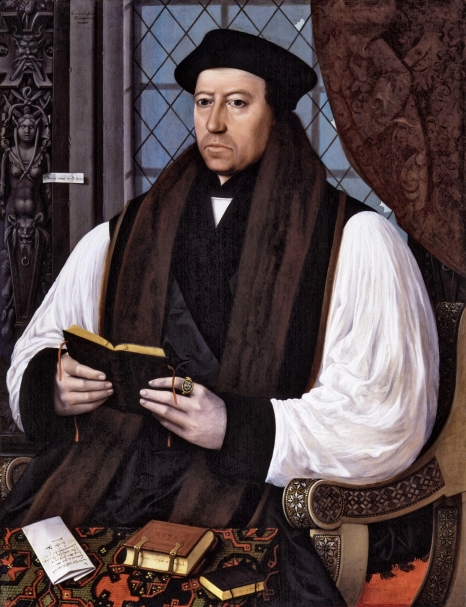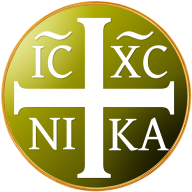This is the fifth article in our Reformation 500 Series.

Thomas Cranmer (1489-1556), Archbishop of Canterbury
Asking about the Anglican perspective on the Reformation is almost risible. This is so only because there are as many Anglican perspectives on the Reformation as there are Anglicans.
Perhaps I’ve put this too sharply. But it is fair to say that there is a plurality of perspectives on the Reformation within the Anglican Church. This is not something we should quickly overlook, either. For this very plurality is a distinctive feature of Anglicanism itself: it is diverse, comprehensive, and tolerant of varying viewpoints—though the limits of this breadth are continually being stretched, challenged, and recently redrawn.
Besides all of this, it is quite commonplace now to think that talk about various “reformations,” rather than “the Reformation,” is more appropriate. Careful scholarship has eschewed the notion that there was ever anything like a monolithic movement of church reform in any concrete sense. This is a narrative we have all bought into for too long, scholars say. Rather, we should look at concrete realities—measurable changes and movements within particular Churches, rather than grand universals. In other words, at least with respect to reformations in England, we should be reading more Eamon Duffy and watching less of the History Channel. So it goes.
Still—whether “the Reformation” in the abstract is a freighted term or not—it does figure into Anglican thought in many ways. We tell new pilgrims on the Canterbury Trail that we are “Reformed and Catholic” and that the Anglican way is a “via media” between the enthusiasm of the Roman Church and the dry-as-dust Protestantism that swept through Geneva. These are great oversimplifications, obviously, but we can’t get rid of them. I’ll leave it for others to decide if they are helpful enough to salvage as useful entry points into a tradition with a history that is far more complex.
Anyways, there are a few ways to assess Anglican views of “the Reformation;” we might look at church architecture in England, for instance, or compare pre-Reformation thinkers with the Reformers on some given theological locus—perhaps justification by faith, or the authority of Scripture. One way of accessing this diversity of opinion on the Reformation, 500 years after its mythical inauguration, is to take a vivisection of the Church’s liturgical life. Really one only has to look at any cosmopolitan city in North America to see a microcosm of the particularly diverse make-up of Anglicanism. Let me sketch a hypothetical example; it may be a bit of a caricature, but it’s not too far from the truth:
Within a 100-kilometre radius or so around a given city, one can easily find Anglicans who ignore the Reformation almost entirely. They walk in procession in their ornate vestments, illuminated by candlelight dimmed by clouds of incense. One might see the saints of the past peering at the worshippers in their stained glass instantiations, while a cadre of priests perform choreographed genuflections before a consecrated Host, simultaneously chanting their prayers in Latin. For them, if the Reformation deserves any attention at all, it’s as a sorry mistake that led the Church away from her medieval groundings, only for her to be restored some 300 years later by some sermons and tracts distributed around Oxford.
You needn’t travel far however, before you walk past the doors of a church with folk music wafting into the air. Before you step in, you’ll notice rainbow flags on the sides of the doors, and you might be taken aback by the brightly painted walls of the interior. You’re more likely to see posters of quotes from the lips of Nelson Mandela or Martin Luther King, Jr. than Martin Luther. Sermons will be engaging and emotive, and will end with calls to fight structural injustice and institutional racism with peaceful action and Jesus’ love. The communion bread and wine is distributed to “all of God’s people” and throughout the Eucharistic liturgy some will be pleased to hear the crisp, clean, gender-neutral language used for God. My sense is that there is little conscious reflection on the Reformation, but there is the feeling that this is a strong Protestantism, especially with regard to the more rigorous (or once more rigorous) official liturgies of the Roman Catholic or Orthodox Church, for example.
Move a little further into the suburbs, though, and you’ll likely find Anglican parishes that have more affinity with typical Free Church Evangelicals in their liturgical life. The celebration of the Holy Eucharist will be informal, with the priest opting for a plaid shirt and selvedge denim over an alb and stole. Instead of the illumination of candlelight, you might find stage lights cutting through the haze of a fog machine, and hear the sonorous swells from electric guitars rather than a thunderous organ. This congregation is probably very self-consciously Reformed, and by that I mean to say: Not Catholic. The focus of preaching and teaching might be on justification by grace alone, and the dangerous, cumbersome hindrance of Church Tradition.
In each of these fictional portraits we see different responses to, or rather, different trajectories from the English Reformation. We see the way that, in the past 500 years, traditions have evolved as clergy and laity have looked back into the past, sometimes with nostalgia and sometimes with disdain.
So, for some Anglicans, the Reformation is something that is best left behind. For others, it seems a distant dream, perhaps a dream from which one might draw some inspiration, some lesson, but otherwise largely irrelevant, something to be left in the past. Certainly, the qualms that Luther had about private Masses are not relevant to 21st-century minds. And finally, for other Anglicans the Reformation is a rallying point, an identity marker not only of who one is, but of who one is not.
Whatever one feels, there is no consensus: even our reformational Book of Common Prayer is no longer an integral part to much Anglican worship, especially in North America. It’s true that particular parishes and dioceses have their pet theologians and favourite orthodoxies, but this is the rub: Anglo-Catholics are just as quick to dismiss the Thirty-Nine Articles as Reformed Anglicans are to defend them.
While the future may have room for some Anglican consensus, as it stands, the most distinctive feature of Anglicanism is its confusing, conflicting evaluations about the Reformation.
Cole Hartin is a PhD candidate in Theological Studies at Wycliffe College, University of Toronto. His thesis explores the interpretation of Scripture in the 19th-century Church of England, with a special focus on the work of Richard Chenevix Trench. He is a postulant for holy orders in the Diocese of Fredericton, and currently serves as a lay discipleship minister at St. Matthew’s Anglican Church in Islington, Ontario.


Pingback: REFORMATION 500 SERIES CLOSES | ORTHODOXY IN DIALOGUE